USask announces 2021 Images of Research Competition winners
University of Saskatchewan faculty, staff, students and alumni submitted their best photos of research for consideration in an array of categories for the seventh annual Images of Research Competition this year.
By RESEARCH, PROFILE AND IMPACTGrand prize: Stew-pendous views! (Photo: Mark Lepitzki)
The winning images and the runners-up are posted on-line at: research.usask.ca. Here are this year’s winners:
Grand prize: Stew-pendous views!
Mark Lepitzki, master’s student in geological sciences
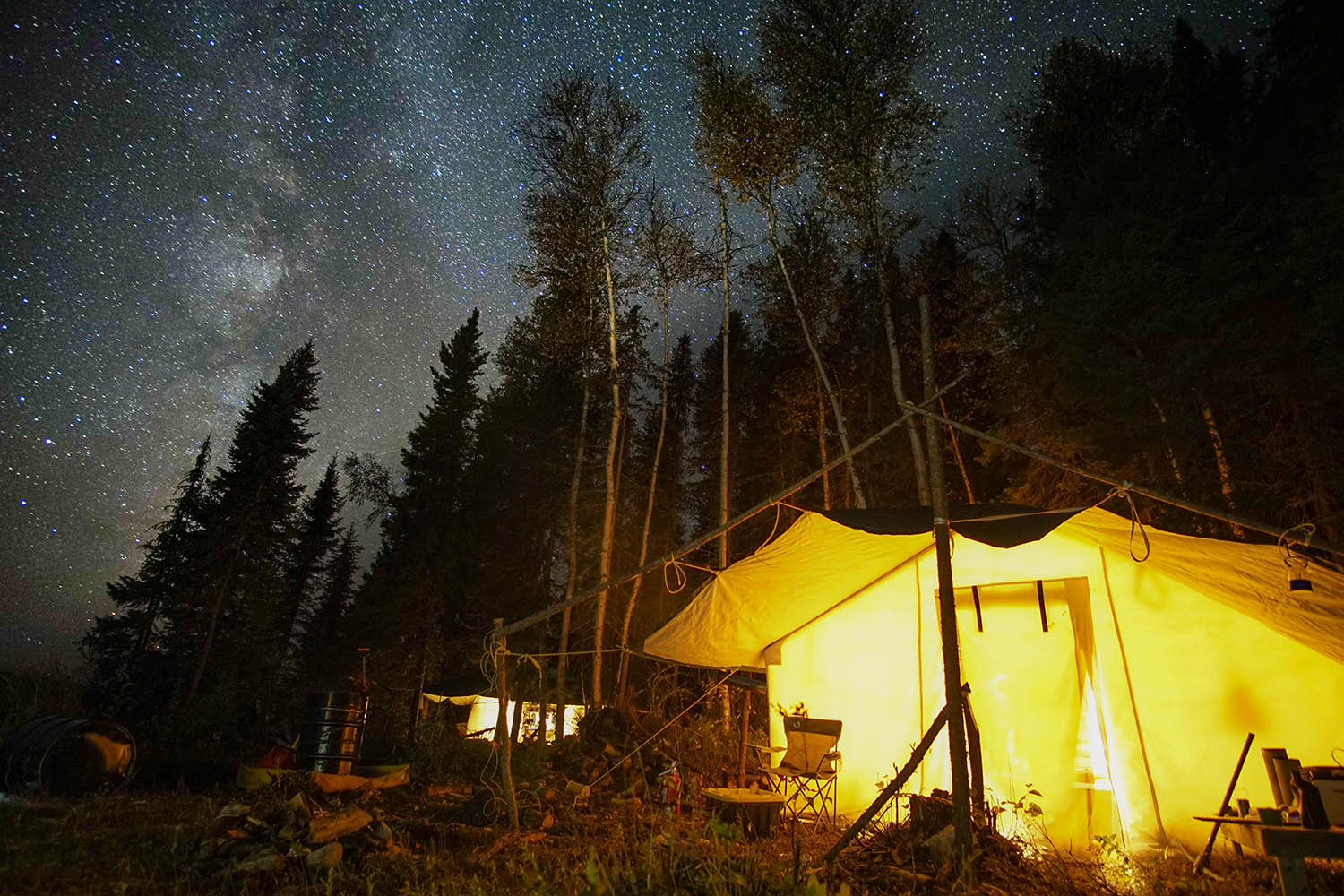
I’ve completed field work in all reaches from 6,800m in the Andes to the outback of Australia. The camp in this image was used by me and my best friends collecting geophysical data in Northern Ontario last fall. The camp was affectionately named 'Camp Stew' due to a grocery flight not bringing the entire order. We vowed to live off an 'infinity stew' for the remainder of the project. We saw the seasons turn from fall to winter with many beautiful aurora displays and this will forever be my favorite field experience. Pickle Lake, Ontario will always be among my favorite places.
Funders: Dias Geophysical
Viewer’s choice: Making waves
Summer Selinger, undergraduate student in toxicology
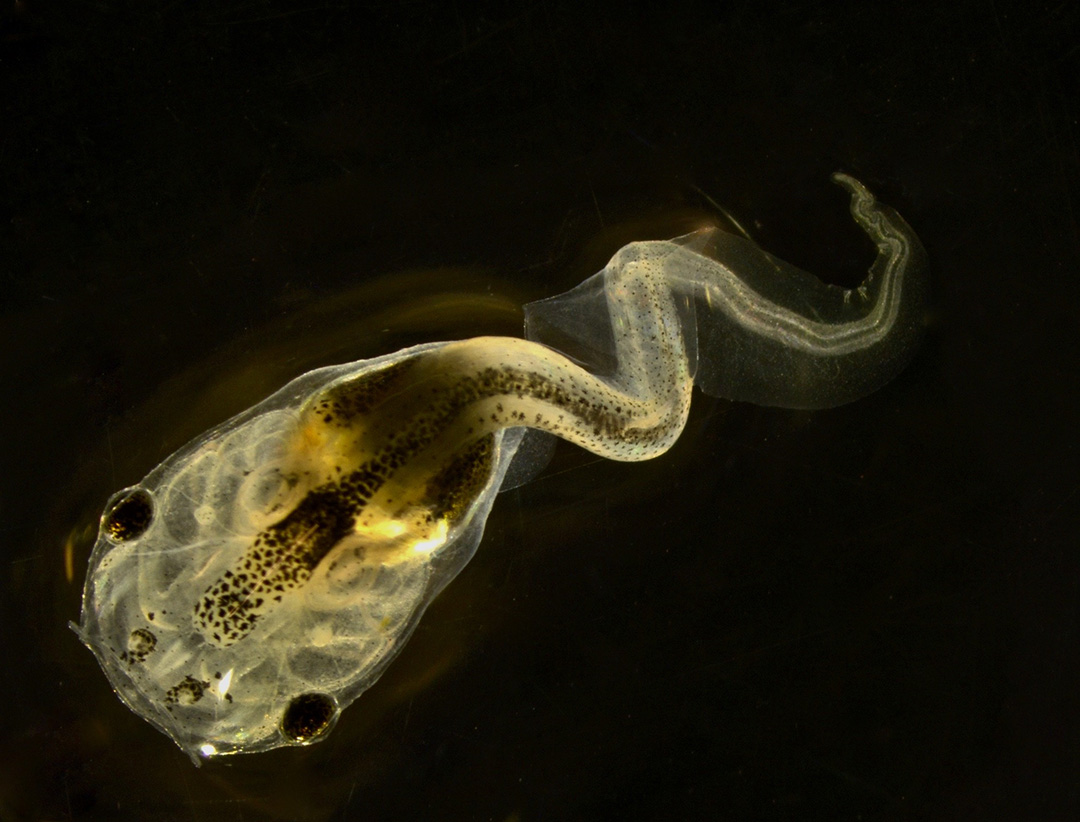
This photo depicts a severe wavy tail malformation in a tadpole (species: Xenopus laevis) that was exposed to lead in the water during the first three weeks of life. Developmental abnormalities like this can have devastating effects on the survival of amphibians as they can affect swimming ability, a behaviour vital to actions such as prey hunting, predator avoidance, and travelling. This tadpole is part of a study at the USask Toxicology Centre that aims to identify how exposure to chemicals can cause subtle molecular changes early on in development that may contribute to obvious effects observed here. Being able
to identify these changes may allow us to predict the potential for a chemical to cause adverse effects before damage occurs.
Funders: Genome Canada, Genome Quebec, Genome Prairie, Environment and Sustainability Canada, University of Saskatchewan, McGill University.
More than meets the eye: Judge a bird by its cover
Alana Krug-MacLeod, alumna, environmental biology
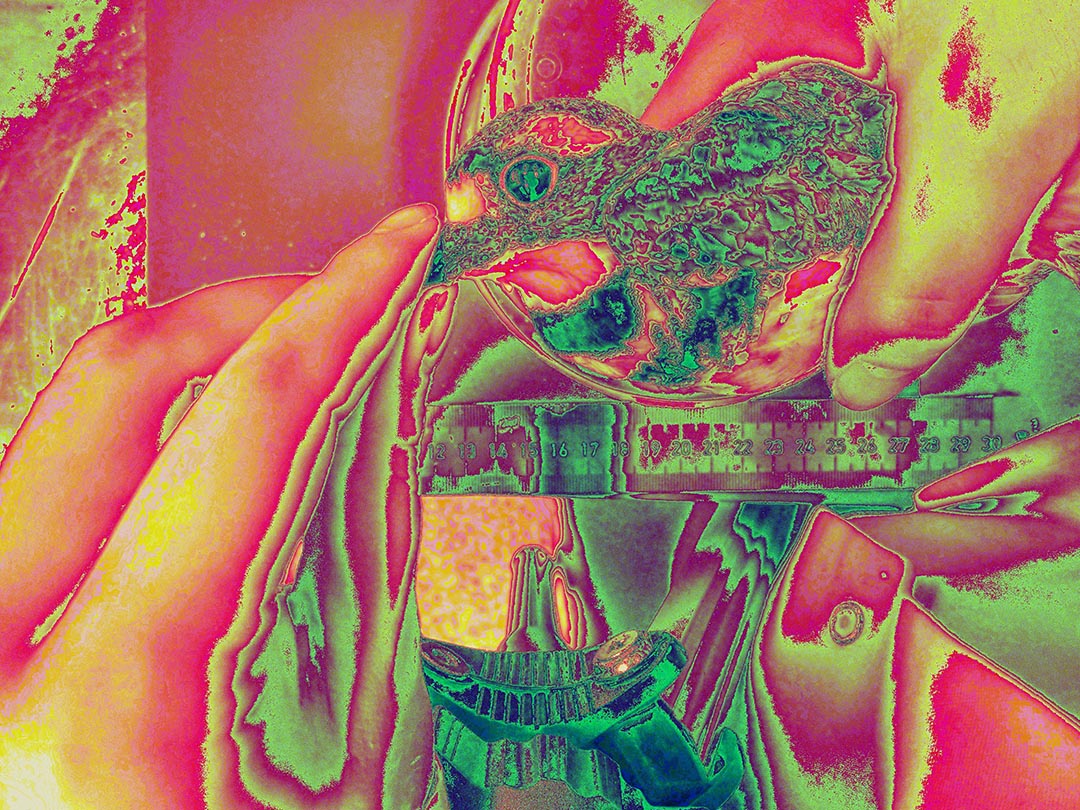
Many birds “read” honest signals, including skin and feather colour, to select desirable mates. I examined yearling killdeer to test whether their “cover”—specifically eye ring and breast band colour—indicates quality and reflects known pre-hatch temperature and contaminant stressors. Human vision cannot separate and quantify aspects of colour, so I used ImageJ software to do so. This computer-altered image, with magenta-peach eye ring and navy-green breast bands, represents extracted brightness values for the birds being photographed. Quantified differences in brightness, hue, and saturation levels for individual killdeer were linked to quality measures and to pre-hatch environmental stress. If, as results suggest, visual cues can help birds reproduce successfully and biologists identify environmental threats, judging birds by their cover protects populations.
Funder: NSERC-USRA
Arts in focus: Precious freshwater
Dr. Louise Arnal (PhD), post-doctoral fellow, Centre for Hydrology, Global Institute for Water Security
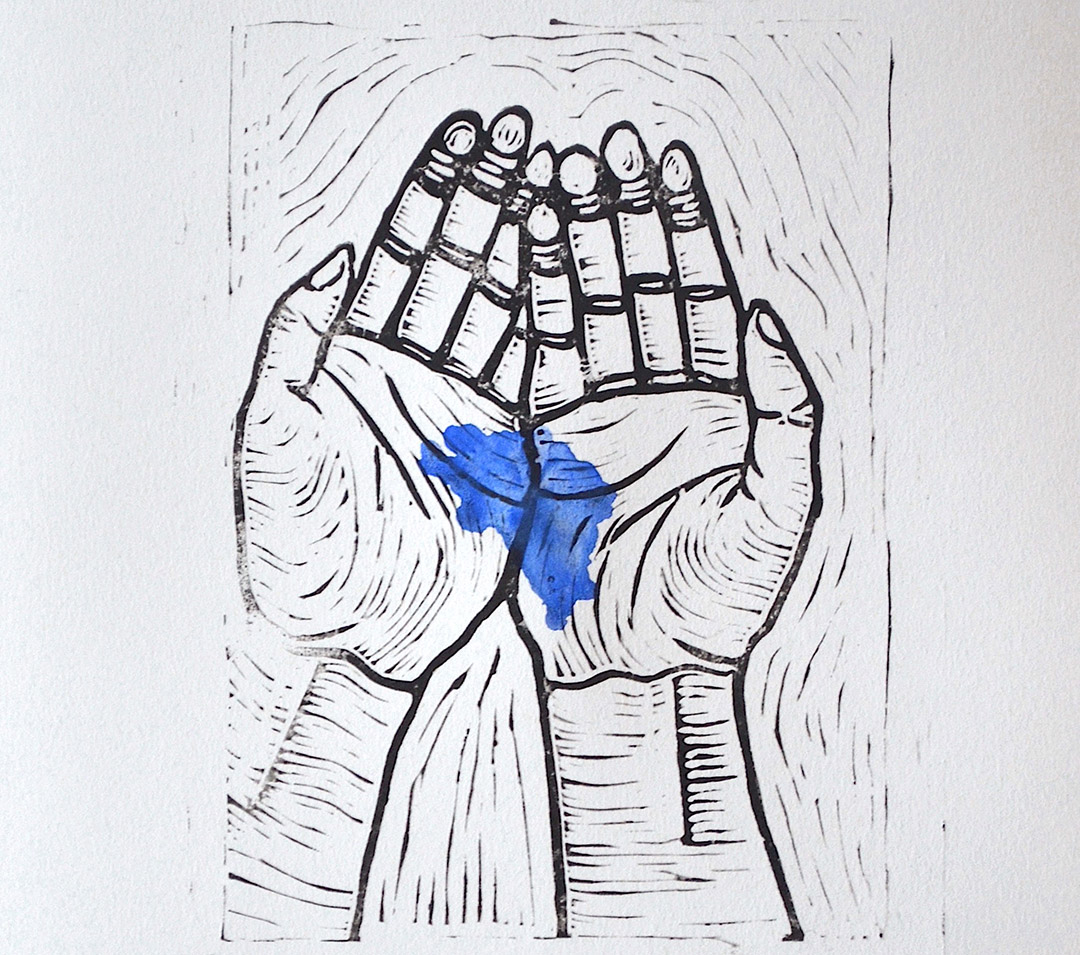
Freshwater, not unlike other resources we use daily, is limited. Its availability is threatened by anthropogenic activity and climate change. I created this lino print to illustrate the important role we, humans, have in caring for and protecting this finite resource. The watercolour in the centre of the piece represents the Paskapoo aquifer, an important source of freshwater in Alberta. This piece was created as part of a science and art collaboration with groundwater scientists and will be featured in the Virtual Water Gallery launching in April 2021.
Funder: Global Water Futures, part of the Virtual Water Gallery pilot project.
Community impact: In a flap about climate change
Alana Krug-MacLeod, alumna, environmental biology
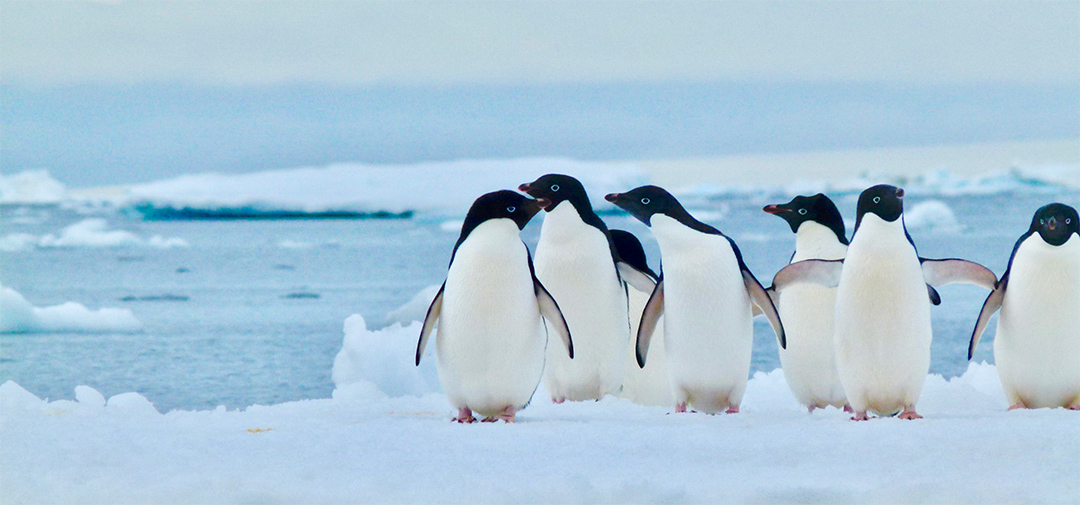
These Adélie penguins photogenically “posing” on an Antarctic ice flow are examples of charismatic megafauna. They are enduring partners in my ecological research because of their popular appeal and because they are bellwethers (observable indicators) of the health of the Antarctic region. Antarctica influences every community on Earth—human and non-human—by regulating sea levels, ocean salinity and temperature, carbon dioxide, and marine food webs. Conversely, because the world’s atmosphere and oceans all interconnect, human actions elsewhere impact penguins in Antarctica. My research explains why even if most of us never venture there, our fates are intertwined. Human-caused, climate-induced changes in Antarctic ice extent that decrease penguins’ access to nutrients and breeding success warn Antarctica cannot absorb more shock to protect us!
Research in action: Academia in unprecedented times
Andrea Wishart, doctoral student in biology

One year since campus shut down. I mourn those lost to COVID and its ripple effects. I mourn my grandfather (I spent the year telling you how much I miss you). I extend unconditional love to those who haven’t found themselves well under the weight of this world. I mourn the lost moments making memories. But I celebrate frontline workers, our flexibility, vaccines. I am thankful for the technology with which I connect with my family, my students as a sessional lecturer, and my fellow graduate students as a PhD researcher. I find solace in lukewarm coffee and the company of my home officemates; even if it means our conversational meows lead to longer editing sessions. I miss you all.
Funder: NSERC, Mitacs, Northern Research Training Program, American Society of Mammalogists, Sigma Xi, University of Saskatchewan Teacher Scholar Doctoral Program, Department of Biology.
From the field: The big push
Ben Fox, master’s student in civil, geological and environmental engineering

Large-scale plate load testing at the University of Saskatchewan’s Livestock and Forage Centre of Excellence (LFCE) was sponsored by Tensar and done to assess the performance of geogrid in aggregate layers over soft sensitive clay. The system was designed to push loads as high as 108 tonnes (238,000 pounds, or 30 elephants) onto preconstructed testing pads using a large piston assembly and a moveable 19 tonne steel platform. Stabilizing aggregate with geogrid is a relatively novel topic and can be used in roads, temporary crane pads, and railway ballasts. It is particularly applicable in the Canadian Prairies where coarse high quality base course is not readily available.
Funder: Tensar International Corp.
Best description: Amarillo sky
Darcelle Sorsdahl, senior research technician in Department of Plant Science
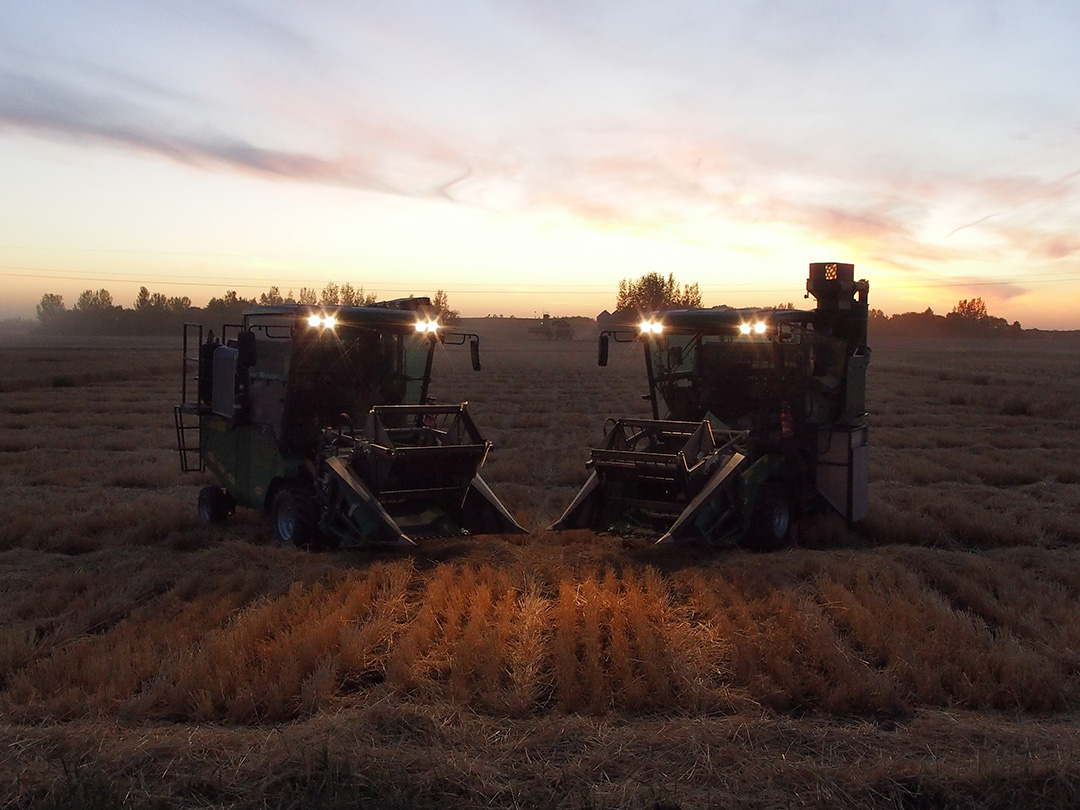
From the morning dew at the break of dawn to the serenity of the evening Amarillo sky, another hard day’s work is done for research. The crackle of the golden wheat ripening under the blazing sun, the smell of the freshly threshed grain, and the fields of stubble we leave behind let us know the growing season is near the end, once again. This photo was taken after harvesting a field of bread wheat that was developed to improve disease and insect-resistant varieties. Harvesting thousands of research plots each year brings us one step closer to a new registered variety. From dawn till dusk, we harvest each plot with the vision of a better tomorrow.

